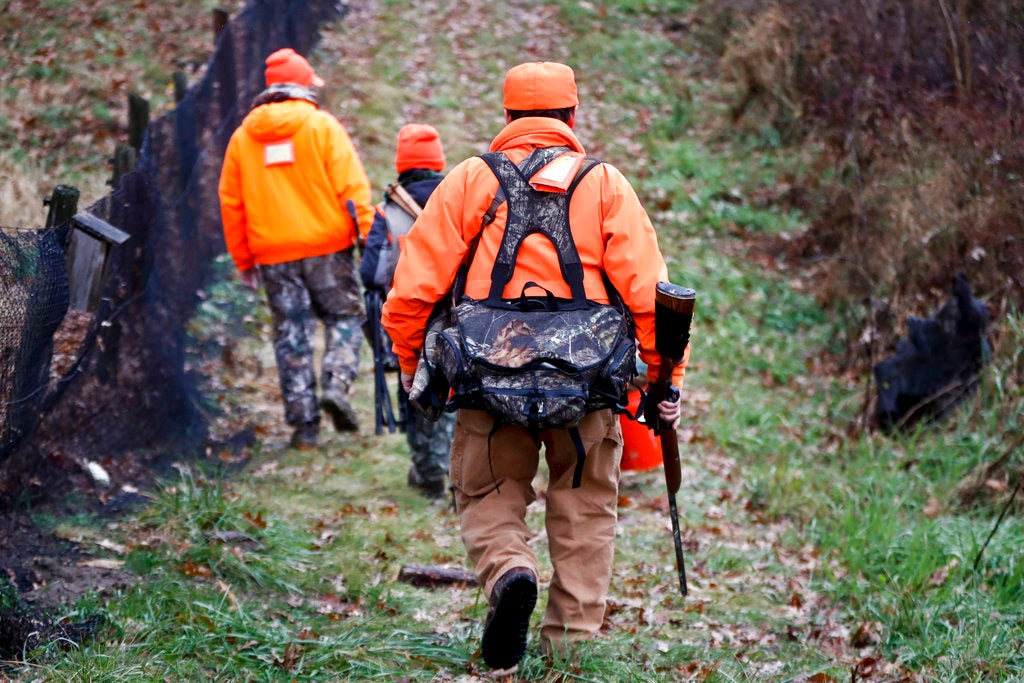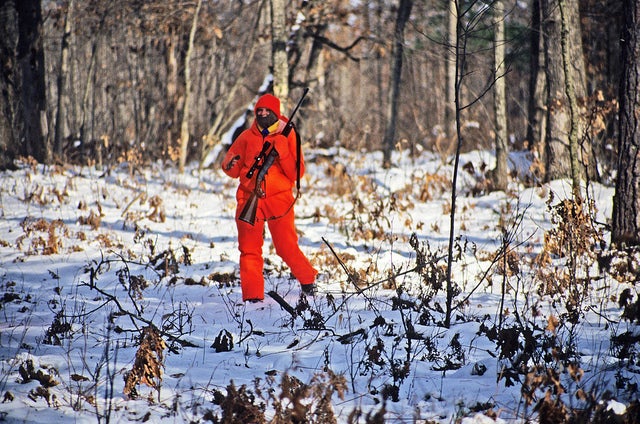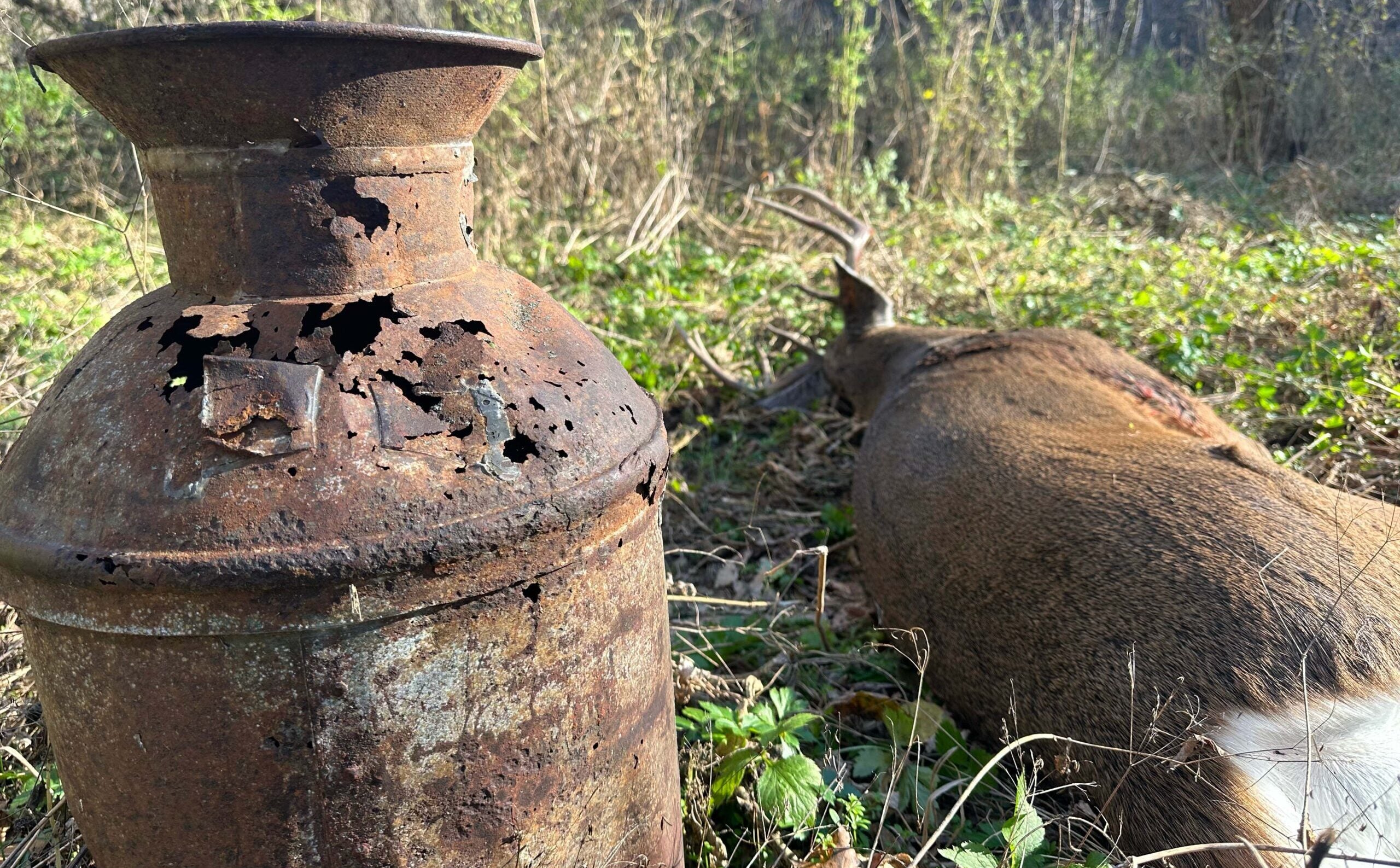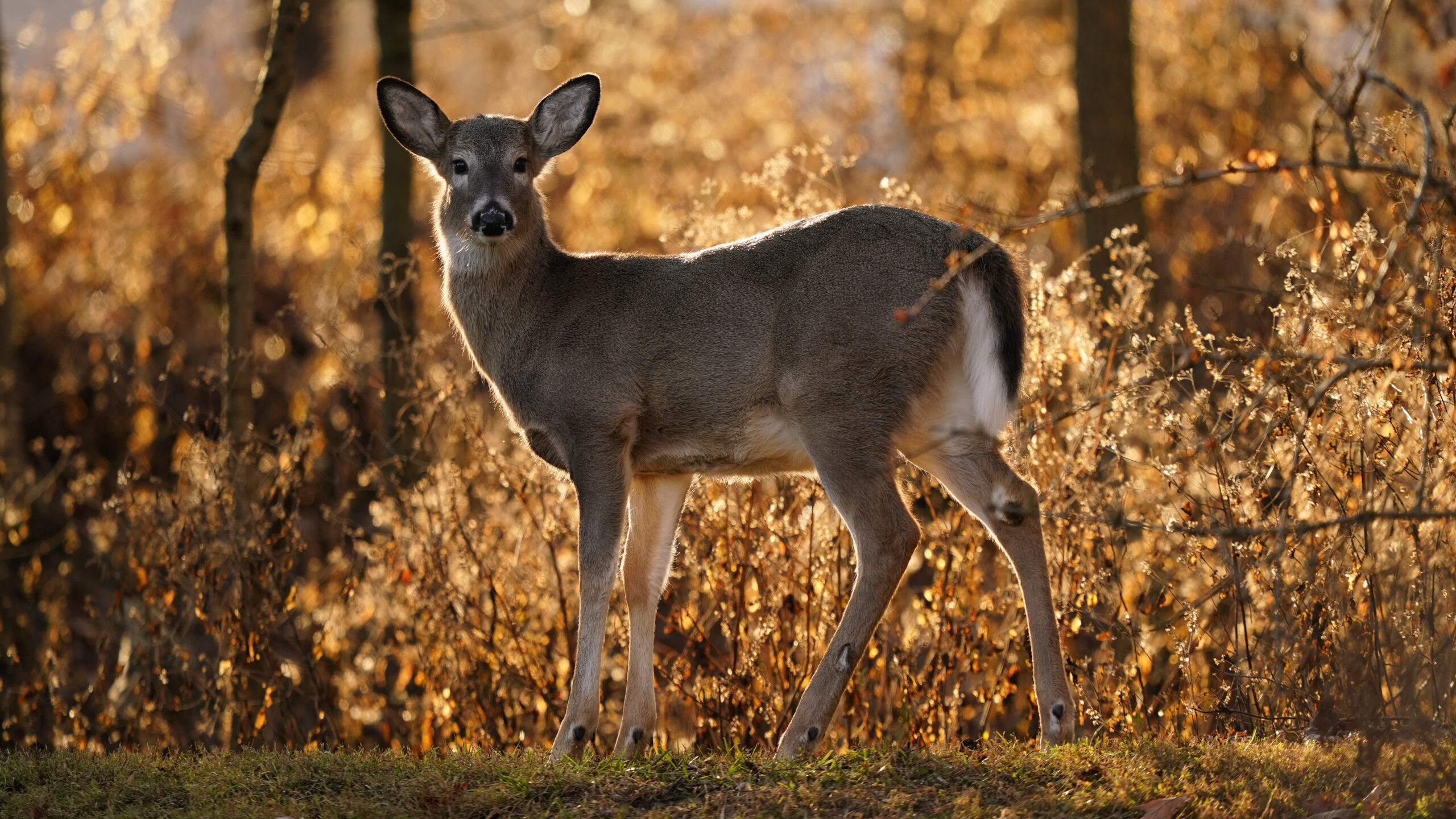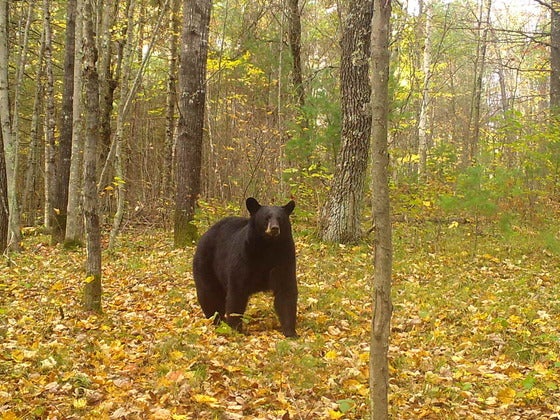The Wisconsin Department of Natural Resources forecasts hunters will likely bag fewer deer during this year’s gun deer season compared to 2022, when snow provided ideal conditions.
DNR Deer Program Specialist Jeff Pritzl said in a virtual briefing Thursday that he would be surprised if hunters matched last year’s harvest.
“I think it’s safe to kind of couch expectations this year that harvest numbers are going to be similar in some parts of the state and possibly running a little bit behind last year,” Pritzl said. “But that’s really going to be contingent on weather conditions.”
News with a little more humanity
WPR’s “Wisconsin Today” newsletter keeps you connected to the state you love without feeling overwhelmed. No paywall. No agenda. No corporate filter.
The gun-deer season opens on Nov. 18 and runs through Nov. 26.
Last year, hunters registered 203,295 deer over the nine-day season, according to the DNR. The overall harvest was up more than 14 percent from 2021. Pritzl said snow and a lack of standing corn that can hide deer from view helped to improve hunter success.
Hunters killed more deer last year despite the state issuing fewer licenses. The agency sold 1.6 percent fewer licenses during the 2022 gun deer season with 554,898 licenses sold. Pritzl said license sales were running 2 percent behind as of the end of October.
“That’s frankly been the norm for the last number of years,” Pritzl said. “What that is capturing is what has become pretty well known now is that the baby boomer generation, who embrace deer hunting like no other generation before, is simply aging out and retiring from deer hunting.”
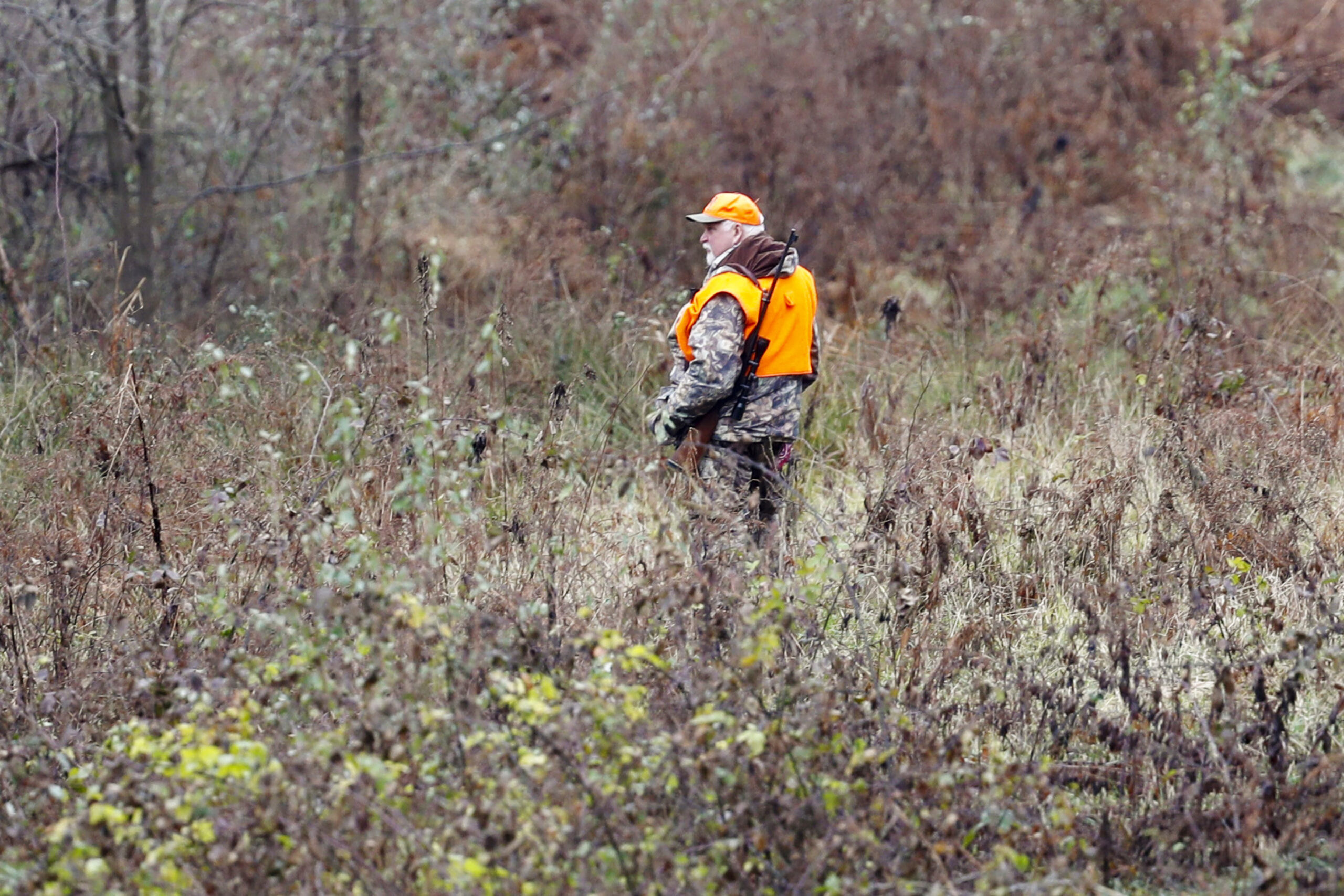
Dave Clausen, a former chair of the Natural Resources Board, hunts with his two sons and five grandkids at a deer camp in Polk County. He said he’s debated whether the family should hunt during the archery and crossbow season, so they can take advantage of warmer weather and the rut, or mating season, for deer. He said the decline in hunter participation is a challenge for managing the state’s deer herd.
“I think that is a tough thing, and I fear for that,” Clausen said. “You can talk to biologists, and they will tell you right now that we do not have enough hunters to control the deer population in the farmland zones. It’s grown out of control.”
Pritzl said the deer herd is larger than it should be on southern Wisconsin’s farmland, posing a challenge for the last 20 years. The DNR expects participation in the gun deer season will continue to decline, estimating the state will have about half a million hunters in the next decade. The agency has previously said license sales have been dropping at a rate of about 1.5 percent each year since 2000.
“It’s been a challenge to use hunting harvests to keep that population kind of in balance both biologically with the natural landscape, but also in balance with human interests and the conflicts that can arise,” Pritzl said.
The DNR estimates Wisconsin has around 1.6 million deer, which has been trending upward. The growth in the state’s wild deer herd has raised concerns among conservationists in recent years about habitat destruction, vehicle collisions, crop damage and disease that could threaten the long-term viability of the population.
In far northern Wisconsin, hunters could see fewer deer this year due to record snowfall last winter. The DNR noted the harvest in northern Wisconsin is tracking 30 percent behind in the archery and crossbow season so far. Last year, hunters killed 20 to 30 percent more deer in the northern forest and central forest regions during the gun deer season. Pritzl said the harvest is expected to remain stable in central Wisconsin areas like Wood, Clark, Adams, and Juneau counties.
DNR urges hunters to test deer for CWD
As hunters take to the woods, the DNR is urging them to test deer for chronic wasting disease after harvest. First found in Mount Horeb in 2002, CWD attacks the brains of deer and other animals, causing drastic weight loss and death over time.
The agency is focusing surveillance in southern Wisconsin this year, and the DNR projects it will collect 19,500 samples. So far, tests show 145 deer out of roughly 1,800 samples analyzed have tested positive for the disease, mostly in southern Wisconsin. That part of the state has seen higher prevalence of the disease with nearly 50 percent of adult bucks testing positive in recent years in areas like Iowa, Sauk, and Richland counties.
Erin Larson, the DNR’s deer health specialist, said reducing contact among deer is one of the best tools to prevent the spread of CWD.
“Ways we can do that is by lower deer populations and baiting and feeding,” Larson said. “Those regulations are another way to reduce that artificial congregation.”
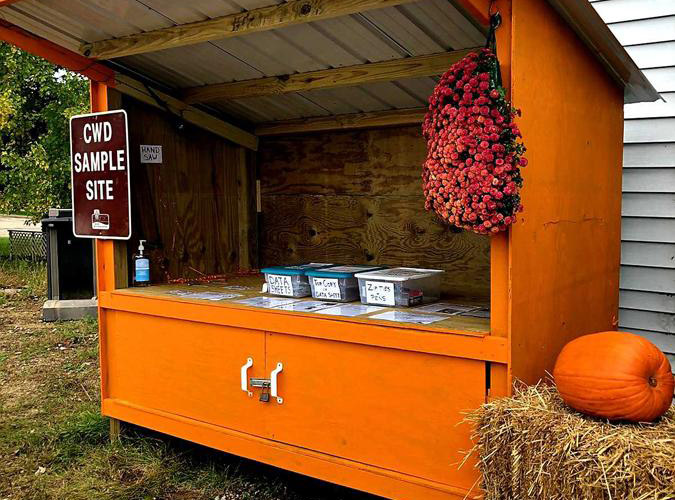
Deer baiting and feeding is currently barred in 58 counties. The DNR recently confirmed wild deer tested positive for CWD in Trempealeau and Polk counties. The discovery will renew bans on baiting and feeding in Trempealeau and Jackson counties.
For Polk County, a baiting and feeding ban will go into effect after the gun deer season on Dec. 1 following the county’s first detection of CWD in wild deer.
Clausen, who serves on the Polk County Deer Advisory Council, said he thinks hunters need to harvest and test a good number of deer there to determine the extent of the problem.
Last year, Clausen said his party shot 17 deer on 200 acres, bagging three or four bucks. While the DNR anticipates it may be difficult to match last year’s harvest, he said he’s already getting pictures of deer from one of his sons and grandkids who are monitoring trail cams.
“I think we have no shortage,” Clausen said. “I expect that there will be a lot of deer taken in our camp this year.”
Wisconsin Public Radio, © Copyright 2025, Board of Regents of the University of Wisconsin System and Wisconsin Educational Communications Board.

